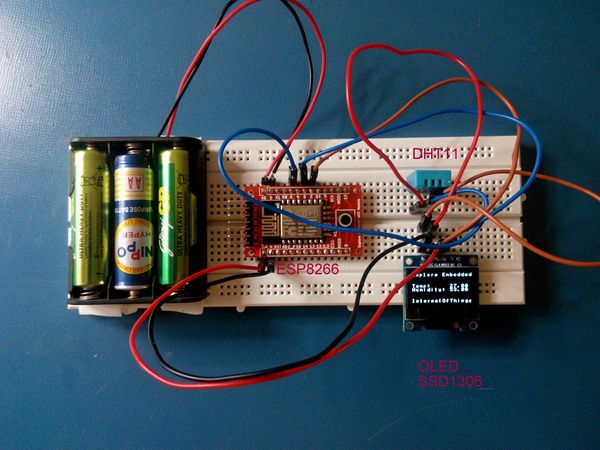Difference between revisions of "A simple IOT demo with Explore ESP8266"
| Line 22: | Line 22: | ||
</html> | </html> | ||
| − | |||
| + | |||
| + | ==Data logging on Thingspeak== | ||
<html> | <html> | ||
| Line 30: | Line 31: | ||
<iframe width="450" height="260" style="border: 1px solid #cccccc;" src="http://api.thingspeak.com/channels/53608/charts/2?width=450&height=260×cale=15&results=60&dynamic=true" ></iframe> | <iframe width="450" height="260" style="border: 1px solid #cccccc;" src="http://api.thingspeak.com/channels/53608/charts/2?width=450&height=260×cale=15&results=60&dynamic=true" ></iframe> | ||
</html> | </html> | ||
| + | |||
| + | ==References and Credits== | ||
Revision as of 16:45, 28 August 2015
Sandeep (talk) 16:49, 27 August 2015 (IST)
We were invited today to give a seminar on "How to get started with Embedded Systems" in a local Engineering college. With very little time on hand, wanted to quickly show the capabilities of ESP8266. So I decided to make a temperature humidity logger. With Thingspeak.com, it was extremely easy to log data and even trigger tweets!
Contents
Components/Boards Used
| 1 | Explore ESP8266 Wi-Fi Module | 
|
| 2 | OLED Display Module 128X64 | 
|
| 3 | DHT11 | Temperature and Humidity Sensor |
Arduino code for ESP8266
Data logging on Thingspeak

